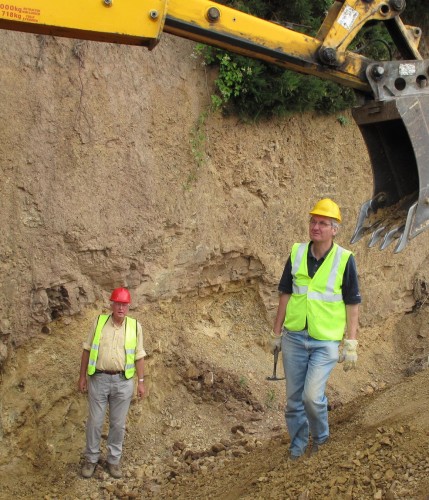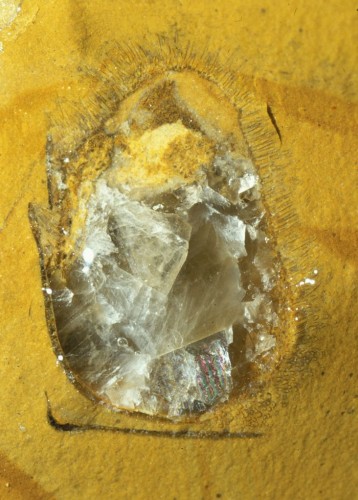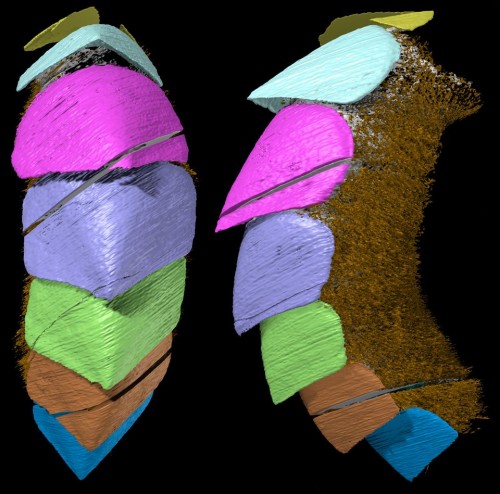New findings suggest that one version of the proverbial chicken-or-egg dilemma has been resolved. The answer, however, does not apply to poultry but instead to mollusks.

A team of researchers led by Mark Sutton of Imperial College London and Derek E. G. Briggs, Director of the Yale Peabody Museum of Natural History, recently discovered a new fossil which has helped elucidate the evolutionary history of mollusks, a category of invertebrate species that includes octopi, chitons, snails, and oysters. The find represents the only known sample of the ancestral species Kulindroplax perissokomos. The Aplacophora class of mollusks, characterized as worm-like creatures, is believed to have evolved from an animal like Kulindroplax. Before the discovery, scientists have long debated the origins of the Aplacophora class of mollusks, whose modern-day members are a collection of shell-less species. One hypothesis posited that the Aplacophorans deviated early on in the evolution of the mollusks, representing a “primitive” line of organisms. The other theory, known as the Aculifera hypothesis, argued that Aplacophora evolved from shelled ancestors and are closely related to other shelled species in the Polyplacophora group, such as chitons. Ultimately, these two hypotheses touch upon much deeper questions regarding the origin of shells in mollusks and the evolutionary relationship between shelled and un-shelled species.
Though recent molecular studies corroborated the Aculifera model, researchers lacked concrete fossil evidence of an ancestral species common to both shelled and shell-less mollusks that would help verify this hypothesized evolutionary relationship.
“The prediction that [this] model makes is that we should find some kind of intermediate morphology between chitons (Polyplacophora) and worm-like mollusks (Aplacophora),” Briggs said.

Briggs’ fossil discovery of the Kulindroplax specimen at a deposit on the English-Welsh border known as the Herefordshire Lagerstätte was exactly the kind of physical evidence needed to corroborate the Aculifera hypothesis. Briggs calls this “the missing link.” Using a grinding apparatus that removed layers of rock only a few microns thick, the researchers were slowly able to reveal the fossil and produce a three-dimensional digital reconstruction. According to Briggs, the fossil was “so remarkably preserved” in the concretion that the form of Kulindroplax’s could be accurately described, almost as if it were a living form.
The formal report was published in Nature by Sutton, Briggs, and fellow researchers David Siveter, Derek Siveter, and Julia Sigawart. The study presents a morphological analysis demonstrating that Kulindroplax perissokomos is an ancestral species that possesses both Aplacophoran and Polyplacophoran characteristics. The most striking physical trait of the four centimeter-long specimen is a series of seven valves or shells coating the exterior of the organism, which suggests that Aplacophora and Polyplacophora evolved from a common, shelled ancestor and that modern day shell-less Aplacophorans arose after losing their shells in the course of evolution. In fact, the round body shape of Kulindroplax resembled that of existing Aplacophorans, while the valve morphology resembled that of modern day Polyplacophoran chitons. The specimen was also covered in spicules or short spines; the researchers hypothesized that these were used for movement through thick sea-floor sediment.

As a consequence of the find, researchers now believe that Aplacophorans emerged more than 50 million years after the Cambrian Explosion, a period of time approximately 500 million years ago, that witnessed a sudden increase in the diversity of many species.
According to Briggs, the finding not only allows researchers to better understand the evolutionary history of mollusks but also highlights how the fossil record continues to provide new insights into the evolution of living groups.
